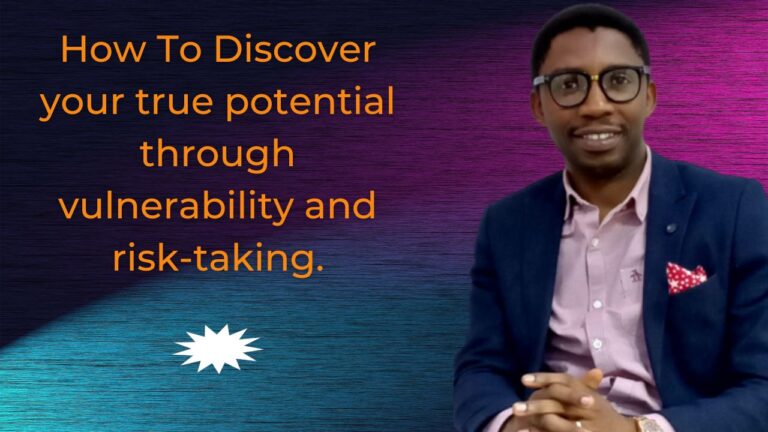How To Prepare your Mind To Accept New Information
Why “A man with a conviction is a hard man to change.”
Have you ever experienced a conflict between your beliefs and behavior or heard something that contradicted your existing beliefs? Have you ever noticed that it can be difficult to accept new information when it contradicts something you already believe? That’s because, as humans, we have a tendency to cling to the s and beliefs that are comfortable and familiar.
As the famous psychologist Leon Festinger once said, “A man with a conviction is a hard man to change.” Our beliefs and ideas can become deeply ingrained within us, making it challenging to accept new information that contradicts what we already know. Cognitive dissonance and selective perception are two powerful forces that can exacerbate this issue. In this blog, we’ll explore how these phenomena work together and why they can be detrimental to our growth and understanding. As Festinger observed, “The person who experiences cognitive dissonance tends to seek out reassurance and support from others who share the beliefs and values that he holds.” Let’s dive into the impact of cognitive dissonance and selective perception on our lives and our ability to accept new information.
What is Cognitive Dissonance?
Cognitive dissonance is a psychological phenomenon that occurs when two ideas or beliefs contradict each other. It’s an uncomfortable emotional state where we become tense, ill at ease, disturbed, upset or anxious. For example, if you believe that smoking cigarettes is bad for your health but still choose to smoke, this would create cognitive dissonance as the two ideas do not align with one another. Or if you believe in environmental conservation but drive a gas-guzzling SUV, this could cause cognitive dissonance since the two ideas are in direct opposition. This internal conflict causes us to feel stressed or anxious until we can find a way to reconcile the two conflicting ideas.
What is Selective Perception?
Selective perception is the tendency to see only what supports our existing beliefs and ignore information that does not fit into our belief system. This phenomenon occurs both consciously and subconsciously; for example, if you’re convinced that your neighbor doesn’t like you, then any time she does something friendly toward you will likely go unnoticed. Our subconscious mind tends to accept only information which reinforces our current beliefs and blocks out anything contradictory to our views. Our selective perception also means that we often overlook opportunities due to our preconceived notions about them—a phenomenon known as confirmation bias. As humans, we tend to prefer rejecting new information rather than admitting we were wrong about something. This means we don’t always get exposed to all sides of an argument when forming opinions on certain topics.
One real-life example of selective perception occurred during the 2016 US presidential election. Studies have shown that individuals tend to pay more attention to information that confirms their existing beliefs while dismissing information that contradicts them. During the election, supporters of both major candidates engaged in selective perception, consuming news sources and social media content that reinforced their own political beliefs while disregarding opposing views.
For instance, supporters of Donald Trump tended to consume conservative news outlets, while supporters of Hillary Clinton were more likely to consume liberal news sources. This selective perception created echo chambers where individuals were only exposed to one side of the political debate, leading to heightened polarization and a lack of understanding between the two camps.
Selective perception can have significant consequences, as it can prevent individuals from fully understanding complex issues and from engaging in constructive dialogue with those who hold opposing views. It is important to be aware of our own biases and to actively seek out diverse perspectives in order to broaden our understanding of the world around us.
The Impact of Both Phenomena
Combined with cognitive dissonance, selective perception can have a substantial impact on how we view the world around us and how we make decisions. When left unchecked, these phenomena can cause us to miss out on unique opportunities or refuse to consider helpful advice because it does not match up with our existing beliefs or attitudes. It also prevents us from learning new things that may be beneficial for personal growth or development—which is why it’s important to recognize when cognitive dissonance and selective perception are at play in your life so they don’t become an obstacle in your path forward!
The impact of cognitive dissonance and selective perception affects everyone in some way—even those who don’t realize it! By recognizing these two psychological phenomena within ourselves and others, we can take steps towards overcoming them so they do not impede our progress or limit our ability to learn from experiences. Taking measures such as actively seeking out diverse opinions and challenging our own preconceived notions helps us stay open-minded about different ways of living and thinking so we can continue growing both professionally and personally!
Ponder Over These And Try To Honestly Answer them:
- How can you recognize if you are experiencing selective perception in your personal or professional life?
- In what ways can selective perception hinder your ability to learn and grow?
- How can you actively seek out diverse perspectives to broaden your understanding of a particular issue?
- Have you ever experienced a situation where your selective perception caused you to miss out on an opportunity? How did you address it?
- What steps can you take to overcome cognitive dissonance and selective perception in order to make more informed decisions?




